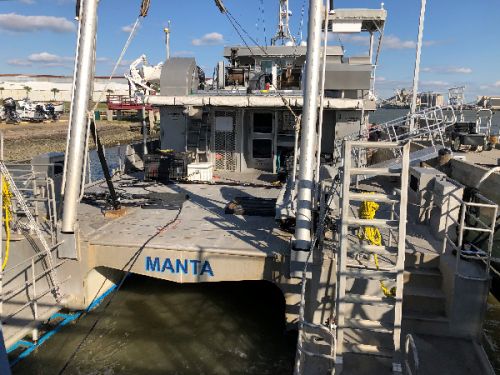OR&R Scientists Hunt for Sunken Oil in Federal Waters of the Gulf of Mexico
MARCH 2, 2020 — Finding and characterizing submerged oil is expensive and a major technical challenge during spill responses and injury assessments, especially when the oil footprint is large and in the open ocean.
To address these issues, OR&R scientists contracted with Induced Polarization Associates (IPA) to test the usefulness and deployment considerations of marine Induced Polarization (Marine IP) for spill response and natural resource damage assessment.
The technology works by sending out an electrical charge along a cable that is towed on the seafloor. Oil can be detected in bottom sediments from received signals that are shifted along a wave compared to the original signal.
The team completed the project aboard the R/V Manta during February 24-27. Other NOAA partners include the National Centers for Coastal Ocean Sciences and Galveston-based staff from the Restoration Center.
The scientists are hopeful Marine IP technology can lower the costs of spill assessments by rapidly surveying large areas of ocean while increasing the accuracy and precision of survey results.
For more information, please contact Daniel.Hahn@noaa.gov , Troy.Baker@noaa.gov , or Sarah.Allan@noaa.gov.
 An official website of the United States government.
An official website of the United States government.

